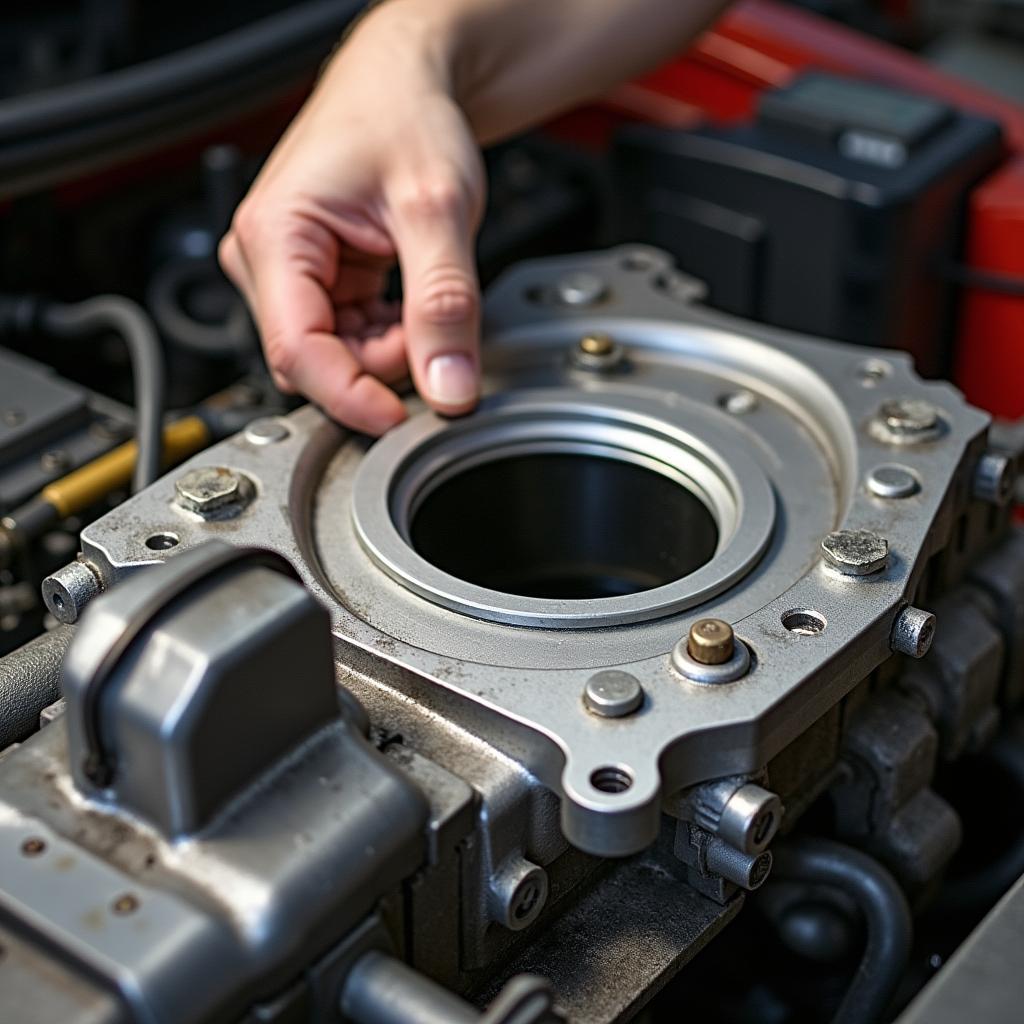Automatic transmission fluid (ATF) is a vital component of your car’s transmission system, playing a crucial role in ensuring smooth gear shifts, efficient power delivery, and overall longevity of your vehicle. Just like any other fluid in your car, ATF needs regular maintenance to maintain optimal performance. This guide provides a comprehensive overview of Atf Car Maintenance, covering everything from understanding ATF types to the best practices for maintaining your transmission.
ATF: What Is It and Why Is It Important?
ATF is a specialized fluid designed for automatic transmissions. It acts as a lubricant, coolant, and hydraulic fluid, enabling the transmission to operate smoothly. ATF helps to:
- Lubricate the transmission’s moving parts: ATF reduces friction between gears, shafts, and other components, minimizing wear and tear.
- Cool the transmission: ATF absorbs heat generated during operation, preventing overheating and damage.
- Transfer hydraulic pressure: ATF transmits hydraulic pressure to engage and disengage clutches, allowing gear changes.
- Protect transmission components: ATF contains additives that protect against corrosion, oxidation, and wear.
How Often Should You Change ATF?
The frequency of ATF changes depends on various factors, including:
- Vehicle make and model: Consult your owner’s manual for manufacturer recommendations.
- Driving habits: Frequent heavy towing or driving in extreme conditions may require more frequent changes.
- ATF type: Synthetic ATF generally lasts longer than conventional ATF.
- Transmission condition: If your transmission is showing signs of slipping, rough shifting, or noises, it may be a sign of ATF deterioration and a need for replacement.
“It’s essential to change ATF at recommended intervals,” says John Smith, a certified automotive technician with over 20 years of experience. “Regular ATF changes can prevent costly transmission repairs down the road.”
Signs of Low or Contaminated ATF
If you notice any of the following symptoms, it may indicate a problem with your ATF:
- Slipping or delayed gear changes: The transmission may not shift smoothly or may delay in shifting.
- Rough shifting: The gear changes may be jerky or harsh.
- Whining or grinding noises: These noises may be coming from the transmission itself.
- Transmission overheating: The transmission may overheat, especially during heavy loads or hot weather.
- Fluid leaks: Check for ATF leaks underneath your car.
ATF Change Procedure
Here is a step-by-step guide to changing ATF:
- Gather necessary materials: You’ll need new ATF, a drain pan, a wrench, and a funnel.
- Warm up the transmission: Drive your car for a few miles to warm up the ATF.
- Locate the transmission pan: Find the transmission pan, typically located on the bottom of the transmission.
- Drain the old ATF: Remove the drain plug and let the old ATF drain into the drain pan.
- Replace the drain plug: Tighten the drain plug securely.
- Remove the transmission pan: Remove the transmission pan and replace the gasket if necessary.
- Clean the pan: Thoroughly clean the inside of the transmission pan with a suitable cleaner.
- Fill with new ATF: Fill the transmission pan with new ATF up to the fill line.
- Replace the transmission pan: Securely re-install the transmission pan with a new gasket.
- Check the ATF level: Start your car and check the ATF level with the dipstick.
“Changing ATF isn’t as daunting as it may seem,” notes Sarah Jones, a mechanic specializing in transmission repair. “With the right tools and a bit of patience, you can do it yourself.”
Choosing the Right ATF for Your Car
ATF comes in various types, and choosing the right one for your car is crucial.
- Consult your owner’s manual: The owner’s manual specifies the correct ATF type for your vehicle.
- Check the transmission dipstick: The dipstick may indicate the ATF type required.
- Visit a reputable auto parts store: If you’re unsure, ask an experienced technician or sales representative at a reliable auto parts store.
Using the wrong ATF can damage your transmission, so it’s essential to use the recommended type.
ATF Maintenance Tips
- Regularly check the ATF level: Use the dipstick to ensure that the ATF level is within the recommended range.
- Avoid overfilling: Overfilling can cause ATF to overheat and damage the transmission.
- Replace the ATF filter: The ATF filter needs to be replaced periodically, as recommended by the manufacturer.
- Inspect for leaks: Regularly check for leaks underneath your car, particularly in the transmission area.
FAQs
Q: How often should I change my ATF?
A: It’s recommended to change ATF every 30,000 to 50,000 miles, but consult your owner’s manual for specific recommendations.
Q: Can I mix different ATF types?
A: It’s generally not recommended to mix different ATF types, as it can lead to compatibility issues.
Q: What happens if I don’t change my ATF?
A: Failing to change ATF can lead to transmission problems, such as slipping, rough shifting, and even complete failure.
Q: Can I change ATF myself?
A: You can change ATF yourself, but it’s important to follow the proper procedures and use the correct ATF type. If you’re unsure, consult a professional mechanic.
Q: How much does an ATF change cost?
A: The cost of an ATF change can vary depending on the vehicle and the ATF type used.
For further advice and expert assistance with your ATF car maintenance, reach out to AutoTipPro.
Contact Us:
- Phone: +1 (641) 206-8880
- Office: 500 N St Mary’s St, San Antonio, TX 78205, United States
 Checking ATF Level
Checking ATF Level
 Draining ATF
Draining ATF
 Filling ATF
Filling ATF
Maintaining your ATF is vital for ensuring the smooth and reliable operation of your automatic transmission. Following these tips and recommendations can help you keep your transmission in peak condition for years to come.







Leave a Reply